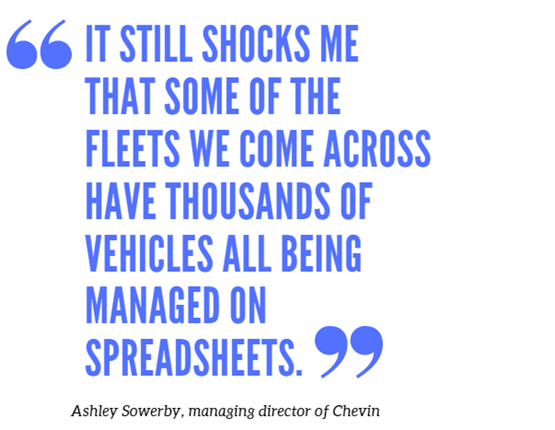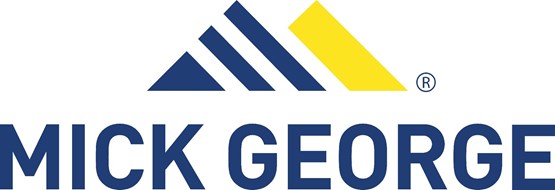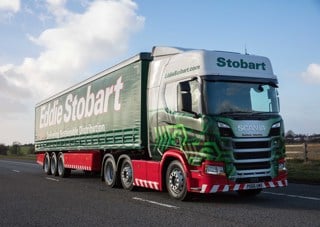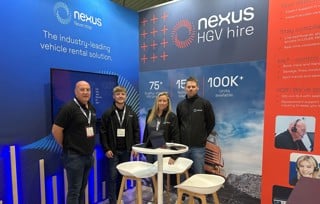Software-as-a-Service and mobile phone apps are transforming how businesses keep control of their fleets. But be mindful of new data protection rules next year.
Fleet management software can make your business more efficient, more compliant and, ultimately, more profitable.
Gaining total visibility of vehicles and drivers through one system enables a fleet operator to drastically cut administration time and reduce paperwork, instead of spending time looking for additional ways to operate more effectively.

Fleets have seen something of a digital revolution in recent years. Until as little as 10 years ago most were operating a paper filing system, but now digital solutions are readily available and can draw data from multiple sources.
According to FleetCheck managing director Peter Golding the turning point was when the internet revolutionised the way people connect their software.
He says: “High-speed broadband changed the way people could use the internet to share or obtain information. It opened up the software-as-a-service (SaaS) model. What this has done is make it easy to access software.
READ MORE: FleetCheck: ‘We help small reluctant fleets’
“If you didn’t have the model as it is today you would be looking at installing expensive systems and a lot of larger fleets would have been doing that over many years.”
FleetCheck was founded by Golding in 2006 to support what he calls “reluctant fleet managers” in smaller businesses who have limited knowledge and time.
An initial focus on the SME (small- to medium-sized enterprise) sector led to the Freight Transport Association (FTA) selecting the company as a key partner for its Van Excellence small fleet programme.

However, FleetCheck has been gaining traction with larger fleets especially since it began to integrate data from other providers, such as telematics, into its software.
Fleet management systems need to be able to handle several hundred data streams including those from leasing companies, fuel card providers and telematics systems.
“The vehicle is at the centre,” says Ashley Sowerby, managing director of Chevin.
“All the costs involved in owning and operating a vehicle are now encapsulated in fleet management. That covers the vehicle, the maintenance, the expenditure, the compliance and the driver.”

Often fleet expenditure would have been captured within an organisation’s P&L and not broken out as a separate cost, so it was very difficult to isolate fleet expenditure as a separate item.
“It still shocks me that some of the fleets we come across have thousands of vehicles all being managed on spreadsheets,” Sowerby adds.
“Other small fleets can have very sophisticated management. It all comes down the fleet manager, or director, and their engagement with technology.”
Chevin is one of the oldest fleet software suppliers. Founded in 1990, it now provides a suit of asset and fleet management solutions which offer third party integration.
According to Nick Walls, managing director of R2C Online, software opens up new ways of working.
READ MORE: R2C Online gearing up for growth
“People’s jobs are not chasing paper around and entering data anymore. It’s about working with that data, understanding what it means and driving the business forward,” he says.
“The barriers to adoption have gone as far as I’m concerned. Hardware costs have dropped drastically and the software is easy to adopt – you can pay-as-you-go. It’s not the same as it was 10 years ago.”
Walls has worked in the software industry for 14 years. He says: “We’ve been changing the marketplace all that time and investing in infrastructure.
"The market has really started to change over the past five years but the bedrocks have been in place for a long time.”
R2C recently launched its Exemplar fleet management system, designed to give maximum transparency and third-party integration. It includes Earned Recognition, the Driver and Vehicle Standards Agency (DVSA) accreditation.
Vehicle fleets are subject to a wide range of legislation which is often subject to change. Businesses face a raft of essential compliance requirements and legislation as well as road traffic law.

Government agencies are increasingly turning to digitalisation to ensure all records encompass real-time data. This includes licence checking, MOT validity, road tax status and the Motor Insurance Database (MID).
Richard Evans, head of business development at Jaama, says: “The efficient management of compliance and adhering to best practice can deliver a host of financial, operation and corporate social responsibility benefits while also making sure the law is obeyed.
“Central to this is a robust audit trail as it’s not what you’ve done, it’s what you can prove you’ve done.”
He warns of the unseen impact of non-compliance such as the reputational damage that can be caused by a vehicle being involved in a serious road traffic incident or falling foul of legislation.
“Loss of customer confidence can have a major impact on retaining customer contracts and winning new business,” Evans says.
Jaama was among the first software companies to combine fleet management software and driver risk management services to help fleets meet their driver health and safety responsibilities under occupational road safety regulations.

Making software work for your fleet

Implementing a digital fleet management system provides transport operators with a holistic view of their entire fleet according to Matt Goodstadt, managing director of transport at Civica.
“Operators can typically make savings of 3% by spotting where fuel efficiencies can be made, also reducing carbon emissions and boosting environmental credentials,” he says.
“Further savings can be made through early planning for when vehicles need to be off the road for maintenance and by reducing over-maintenance of vehicles.”
To benefit from greater visibility and transparency of your compliance picture, you need real-time data. That requires visibility across your supply chains.
Walls says: “You need to get suppliers to work with you on these systems. That then gives you the visibility you need for the compliance and maintenance of your assets.”
He explains that there is less resistance than many people expect when asking suppliers to adopt systems.
“It was suppliers who initially took up the solution and they saw it as a customer service initiative and of benefit to their own workshop operation.
"There is no kind of resistance there because the concept was something they pioneered first,” Walls adds.
But the availability and sources of data have increased exponentially over the past decade, potentially creating a ‘data overload’.
This has added another dimension to the challenge of running a more cost-effective, yet compliant, fleet.
Evans says: “You need to ensure the data you collect gives you the strategic advantage you need.
“It’s important to be methodical. Review what data you need, think about what the objectives are for collating it and what you are going to do with the information.”
Data controllers and processors are now exposed to greater penalties for misuse of personal information.
Data protection regulations
New General Data Protection Regulation (GDPR) measures come into force on May 25 next year aiming to protect EU citizens from privacy and data breaches in an increasingly data-driven world.
Any organisation not complying faces a significant fine.
Fleets with in-cab cameras and telematics systems will need to make sure all their tracking systems meet the new standards because they will be responsible for any data breaches, rather than the camera or telematics supplier.
Companies are advised to start by making sure they give detailed notices to drivers about what they do with telematics data, where it goes, the data being processed and the security that is used.
A good software provider will be able to assist with any GDPR-related issues, to ensure systems are compliant.
Goodstadt outlines some of the key advantages a fleet management system can provide, saying: “A fleet management system gives operators greater control.
"Drivers can report a vehicle defect online, book a pool or hire vehicle, and report accidents, reducing administration and vehicle downtime.
"The system also sends business-critical information automatically, alerting any compliance issues so that businesses can act to avoid problems.
“Proactive management of drivers, recording all their training, accidents, endorsements, average miles per gallon, and even driving style from telematics, allows the software to create risk profiles to enable tailored intervention with drivers.
"This reduces the possibilities of accidents, which will, in turn, reduce driver insurance premiums. What’s more, digital software can also help businesses reduce the size of their fleets.
"Through smart deployment and identifying under-used vehicles, the software provides insight that informs businesses of the optimum number of vehicles required at any given time, reducing capital and running costs.”
READ MORE: GDPR data rules are a 'ticking timebomb' for fleet managers, warns VisionTrack
Golding says a lot of the advancement in the take-up of fleet management software is down to the wide adoption of smartphones.
“The majority of drivers now have smartphones,” he says. “Apps now have a much more valid role to play in the overall management of vehicles and drivers.”
FleetCheck has found that one of the biggest issues companies face is getting information back from the driver.
That can be confirmation of daily walk-around safety checks or photographs and information of accidents and damage.
“Apps remedy the problem of getting van drivers to do walk-around checks,” Golding says.
“It’s been heavily regulated for a long time, but even the HGV operators are looking at how they can streamline and avoid using paper.”
But Evans warns: “It’s important to think carefully when using new technologies and the implications of the data that they’ll produce.
"They may inadvertently capture data that demonstrates non-compliance but also consider – especially with third party apps – where the data is stored, how it is manipulated, does it ever actually get to you and is it meaningful.”
An app that accompanies a fleet management software package will not only serve as a link to the driver but also gives the fleet manager 24/7 access to their fleet ‘dashboard’ and real-time alerts when they need them.
Evans confirms, saying: “It’s essential all data is centralised so you have a holistic view of your fleet operation. Using data proactively allows the identification of priority areas of concern.”
Choosing the right system
Most fleet management packages are now cloud-based, this means operators do not need to host the system on their own computers.
The provider will handle all the hardware and the fleet manager or business owner can log in from any computer or mobile device with an internet connection.
When setting up your package, the supplier should work with you to establish what features you require.
Many packages are known as ‘modular’ which means the provider can switch on or off different aspects of the system dependent on what data you have available and what you need.
The DVSA decision to launch Earned Recognition puts extra pressure on fleets to go digital.
DVSA is recognising that lots of companies can already access data and that information can be used, through KPIs, to show whether they are operating compliantly and their driver infringements are being managed correctly.
To qualify for Earned Recognition, a business must be capable of generating monthly KPI reports which include vehicle maintenance and driver data. This is easily done using a holistic software package.
READ MORE: Driving and Vehicle Standards Agency supported by Chevin fleet management software
Fleets without trucks can also benefit from applying a high level of compliance awareness to their vehicles. Many operators are now seeking best-practice accreditation with industry bodies such as the FTA.
Golding explains: “The challenge a lot of SMEs has is that fleet management is just one of the jobs they do. It’s often shared within an organisation.
"You may get a company where two or three people deal with different aspects of fleet. It’s often only when there are a lot of vehicles the processes are centrally managed by a robust fleet department.
“One of the key areas we work with companies on is to move them away from being reactive to being proactive, by providing them with exception reports.
“We can proactively show very quickly which vehicles haven’t had maintenance or safety checks. Even for the smallest fleets it’s relevant.”
Sowerby concludes: “It ultimately comes down to cost control and visibility. If you’ve not got software in place you’ve not got cost control and you’ve not got visibility.
“I think every organisation puts a significant focus on cost control and that is what fleet software is all about – cost control and compliance.
"Everybody wants to know what vehicles they’ve got, that they are being operated efficiently and costs are being reduced.”
Software in practice

Company: Mick George
Software provider: R2C Online
Construction industry specialist supplier Mick George was able to reduce administration time by 70 hours per week with the adoption of R2C Online. It previously used a paper-based system to manage its fleet of 260 LGVs.
Joe Gossage, Mick George’s transport manager, said: “We had massive amounts of paperwork – inspection sheets, driver pre-use checks and wall planners.”
One of the biggest issues the company faced was with maintenance sheets. Not only did they create an unsustainable amount of administration work, they often had mistakes or illegible content.
“The workshop creates a digital inspection sheet which, upon completion, is uploaded directly to the cloud-hosted asset file.
£It means we can use a single system to track the inspection status of any vehicle, retrieve previous inspections and track work-in-progress.”
The company also switched to digital pre-use checks, reducing paperwork by 500 sheets per day. Drivers now use a mobile phone or tablet to complete the daily check which delivers real-time information into the workshops.

Company: Dorset County Council
Software provider: Chevin
Dorset County Council switched to Chevin Fleetwave in 2012, replacing its aging in-house vehicle maintenance system and saving £60,000 per year.
The existing provision was unable to keep up with changing legislation and could not produce adequate maintenance reports.
Sean Adams, corporate fleet manager at Dorset County Council, says: “Like many local authorities we have fewer people doing more work. It’s crucial to our service that we can remove inefficient manual process and cost. Fleetwave provided us with a fully transparent desktop system, giving our internal customers access to their vehicle records, planned inspections and maintenance, historic and current repairs and costs.”
The reporting function allowed the council to identify assets which were performing poorly and identify areas for improvement.
Chevin imported all of the fleet’s existing data from its old system into Fleetwave as well as incorporating a large amount of new data.

Company: Anglian Water
Software provider: Jaama
Anglian Water is implementing Jaama’s Key2 package to manage its fleet of 1,800 commercial vehicles, 700 cars, 100 HGVs and 3,000 items of plant equipment.
The package will be fully implemented in May 2018 and Stuart Lightbody, Anglian Water head of fleet services, is hoping it will deliver significant administration and cost savings.
He explains: “Management of vehicles, plant and drivers has been spread across numerous applications, databases and spreadsheets with no integration to allow a joined-up view.
“Key2 will allow all information and data to be accessible in one location.
"It will enable vehicle and driver performance history to be managed and additional information, such as from telematics and fuel cards, to be used more effectively to deliver efficiencies.”
The implementation of Key2 will also allow the business to move away from running paper-based workshops, significantly reducing administration.




















Login to comment
Comments
No comments have been made yet.